A Week in the Bush Vol. 485
on Dec 13, 2023The week started successfully for the Talamati Pride females who took down a Blue wildebeest. They are in excellent condition, and with the carcass almost finished, they will spend the day digesting their meal before heading off again. With a low success rate in hunting, these lions ensure they finish every last bit of meat and let nothing go to waste.


Shortly after leaving Earth Lodge, we found tracks of male lions moving into a thicket. We drove around to see where the tracks crossed out, but with no tracks visible, we went on foot to get a better understanding.
We came across the remains of a young buffalo carcass and found a hyena running with a small piece of meat. Upon closer inspection, one of the young Talamati males was moving away from us. We returned to our vehicles and followed up again to find the lions sleeping, heavily panting after finishing their meal in a very thick area. These two males will spend their day in the thicket, digesting their meal before moving on again tonight, not wanting to spend too much time in the same area, avoiding bumping into any unwanted rivals.


After sunset we decided to return to the Talamati males from the morning. They were finishing off the remains of the young buffalo kill they had made before slowly moving off deeper into our reserve. With them not being dominant just yet, they will not spend too much time in the area as they know there is always a possibility of the dominant males finding them when they see all the vulture activity around the area.


Hearing male lions roar at night is something everyone wants to experience. After hearing them on our sundowners, we decided to return to them and see if they were active. As we got there, they were lying in the exact same spot where we left them earlier. But, patience is key. And this paid off as they lifted their heads and gave us a once-in-a-lifetime experience roaring right next to the vehicle, sending shivers through our bodies.
Male lions will vocalise to warn potential rival males of their presence and also communicate to female prides that they are in the area. These big cats claim dominance right from the get-go when they start roaring and sending that sound through the bush.
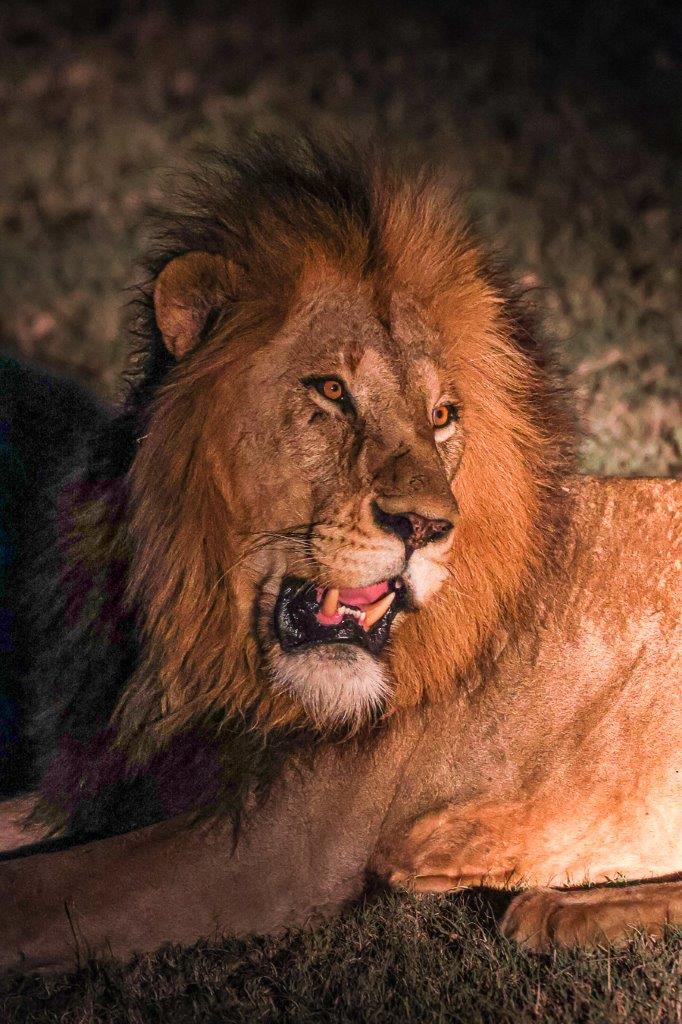
Early mornings are the best time to be out and about in the bush, and this paid off. We stumbled across the Nottins male with a very full belly, and it was clear he had a meal recently as he was looking for the closest shade to lie down and rest. Being very aware of his surroundings, he will rest most of the day and only move if needed. Exciting times are ahead for his male as he is growing by the day and becoming a male in every sense of it. He will soon have to move on and establish an area where he can continue growing his confidence and hopefully, one day follow in his father's footsteps.
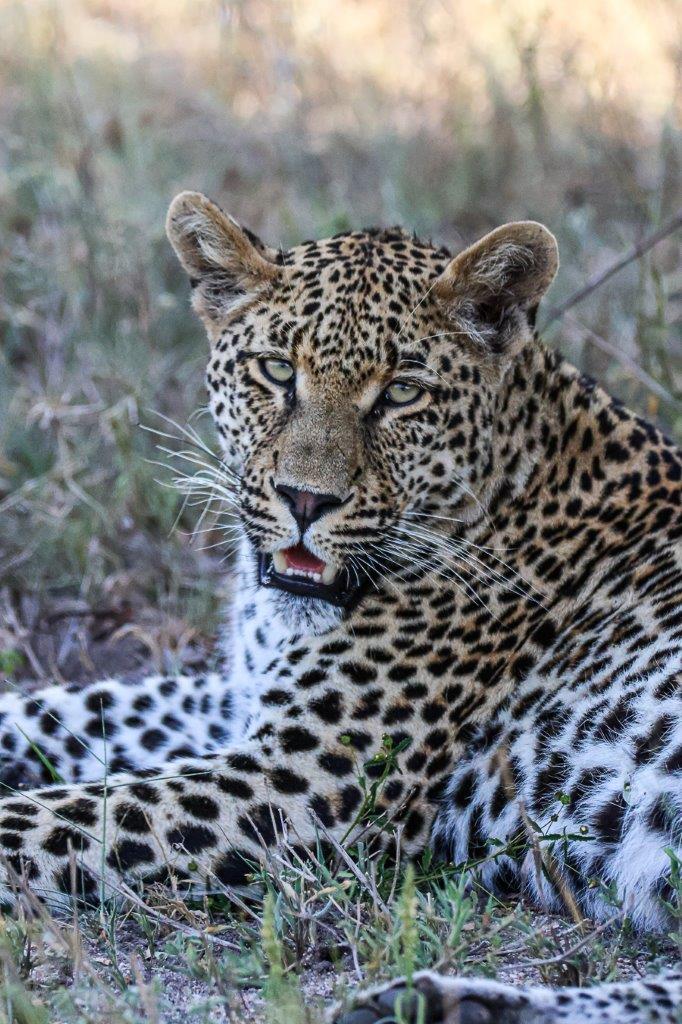
Seeing a fully grown male leopard is something out of this world; the pure size and muscle is unbelievable. We found the N'weti male as he made his way through our reserve, frequently stopping to scent mark his territory, letting any other males know of his presence. He is in excellent condition, indicating he had a good meal recently. However, that didn't stop him from taking any opportunity as he attempted to stalk a Blue wildebeest female. As this was unsuccessful, he carried on with his scent marking. After a sprinkle of rain, these leopards will scent mark their territory boundaries again, as the scent might have been washed away with the water.

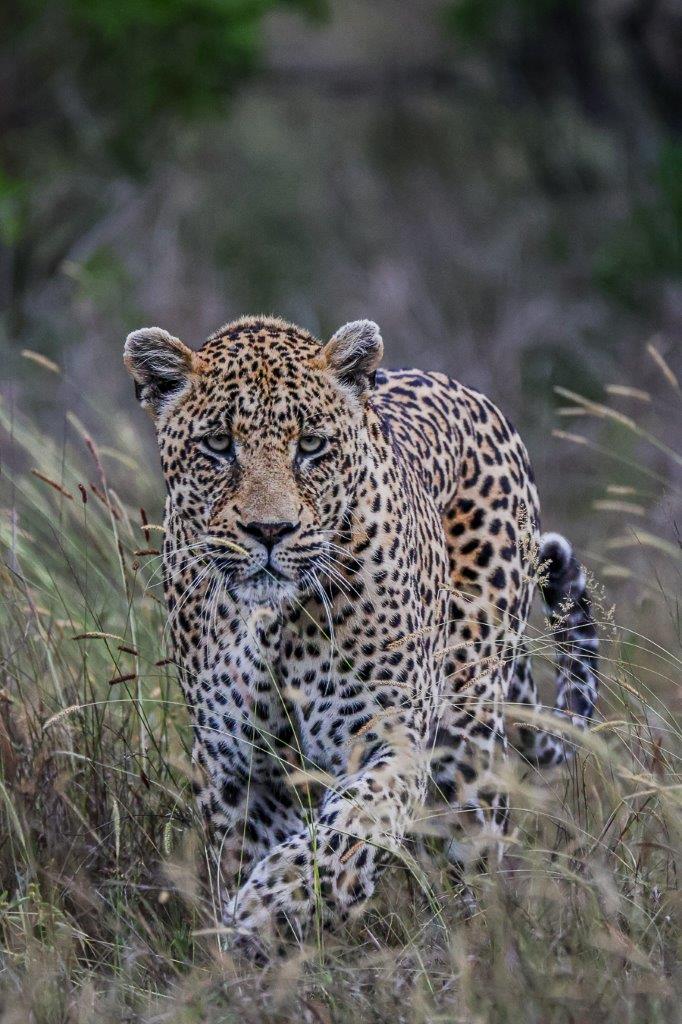
A few days later, we found N’weti again. He was clearly on the hunt as he was slowly moving through the thicket, stopping every couple of metres and smelling what was going on around him. We quickly realised that he was heading straight towards a big termite mound with newborn warthog piglets and decided to wait for him there to give him and the warthogs a fair chance.
As he got close the warthog female made a big mistake by running out of the burrow, with four piglets following. N’weti saw this as his chance and gave chase, securing a meal once again right in front of our eyes. He quickly went up a fallen-over tree knowing the squealing noise of the piglet would attract hyenas in the area. Perfect timing as one hyena showed up seconds later just to lie in the grass watching the meal out of reach for him but perfect for the leopard as he is in safety.
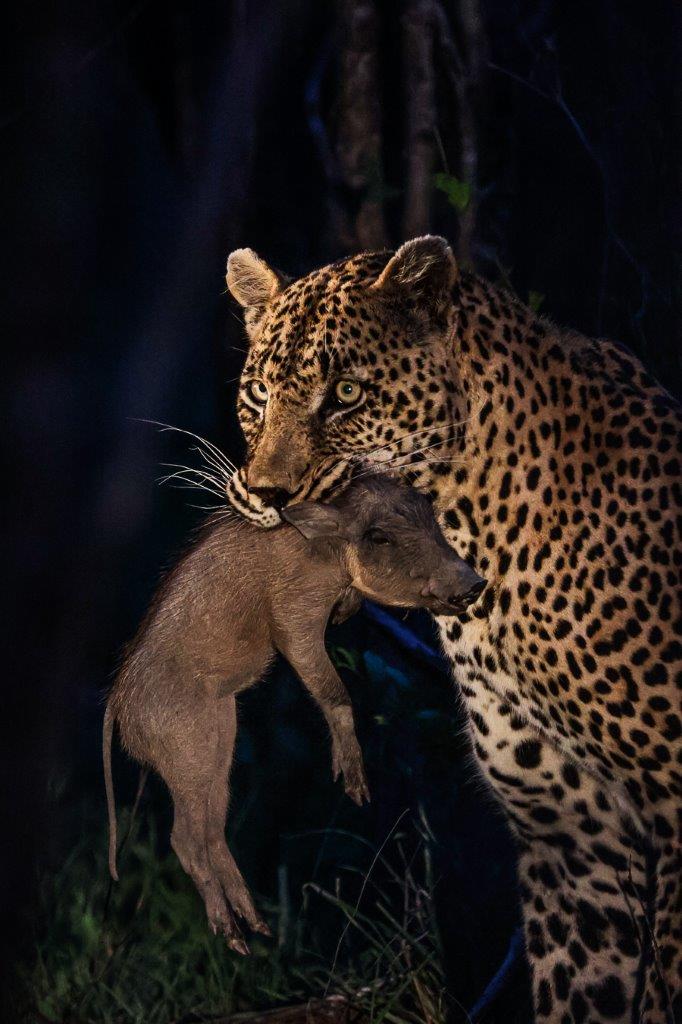
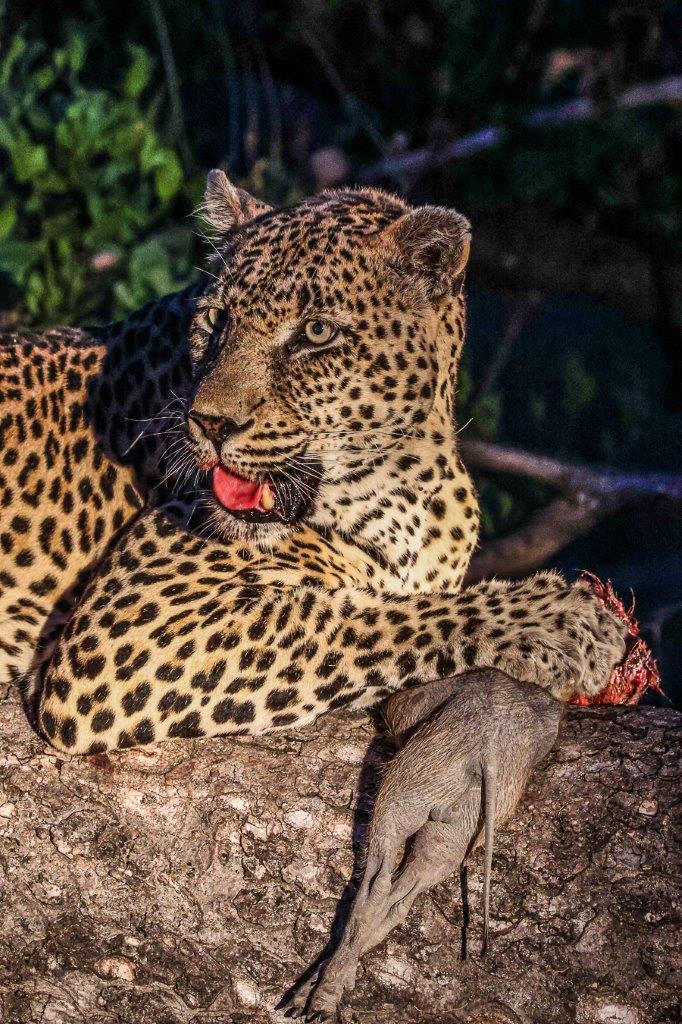
We found the Golonyi female just as she was finishing her impala kill. She hesitated to move off because of a hyena waiting at the base of the tree, hoping for any scraps to fall, but unfortunately for the hyena, nothing was dropped, and it moved off. Golonyi then made herself comfortable on a rock, where she proceeded to groom herself.


After finding drag marks crossing one of our roads, we decided to walk into the bush to unfold the mystery. After a mere couple of meters, we found the carcass of a young kudu calf hanging from a tree and decided to return to the vehicle to inspect the area. With no luck finding the leopard, we returned to the lodge and tried later in the afternoon.
We returned and found the Mawelawela male resting on the ground. It was clear he was watching our every move earlier in the morning but did not want to give his location away due to his shy nature. We sat with him until dark as he was panting heavily, having finished most of his meal before moving deeper into the vegetation.
Leopards will mainly try to sleep in areas where they feel safe and comfortable, even if it means sleeping on the ground. With an excellent sense of smell and hearing, they will pick up on any potential danger approaching and retrieve into a safer spot.
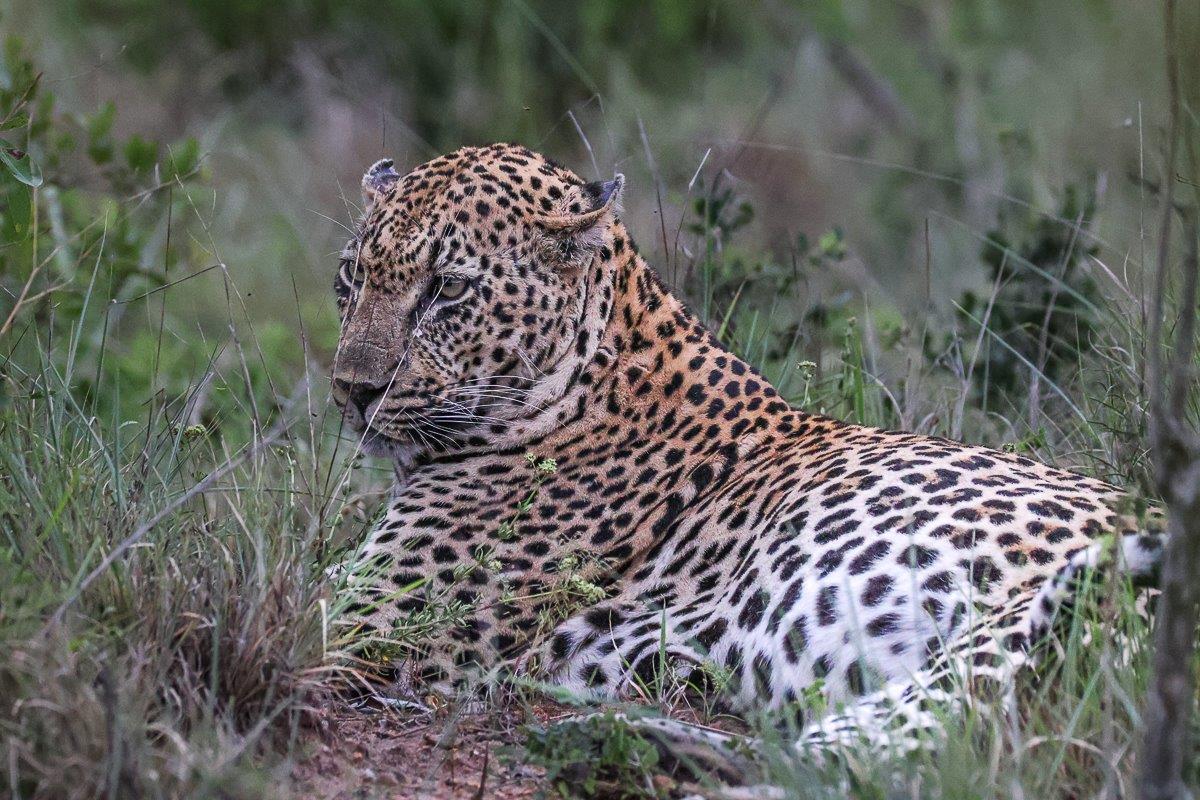
Guarded by Ntsumi, a male impala was draped over the branches of a large Marula tree. A handful of fixated hyenas lay in tall grass below, patiently waiting for some scraps to fall from the carcass. Soft calls from Ntsumi suggested that the cubs may be nearby and seconds later a tiny spotted face appeared from the grass.
A full-bellied Ntsumi lay rather unfazed as her cubs, ever so brave, attempted to get past the unsuspecting hyenas. Soft mumbles from Ntsumi got the cubs to retreat to the thickets before any of the hyenas noticed their presence. The pure bravery of these two cubs is nothing but astounding, willing to risk their lives to get to Mom. However, the discipline is most impressive. These cubs are no strangers to danger and it is only due to the intelligence and discipline instilled in them by Ntsumi that they have managed to evade and survive all threats to date.
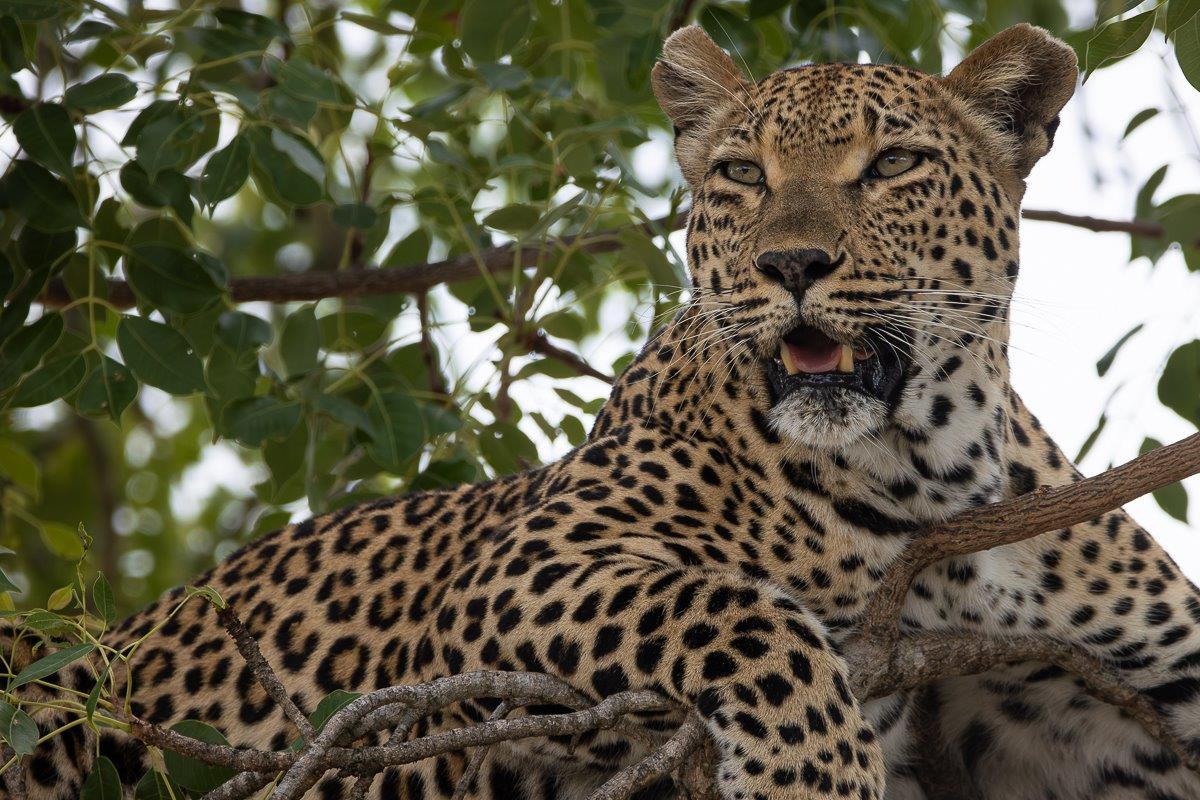


With big rains moving in we ventured out on an afternoon drive, not knowing what would unfold. Driving across one of our big open plains, we spotted a female cheetah lying in the open, overlooking her surroundings. With this female in very good condition and fresh suckle marks on her, it is clear she has cubs stashed away somewhere. She is doing a very good job so far of securing meals for herself, which will enhance her milk production and give her cubs nutrient-rich milk. Only time will tell what will happen to her cubs as these cats have a staggeringly high rate of infant mortality, with only about 15% of cubs reaching adulthood. This makes it extremely hard for the cheetah population to flourish.
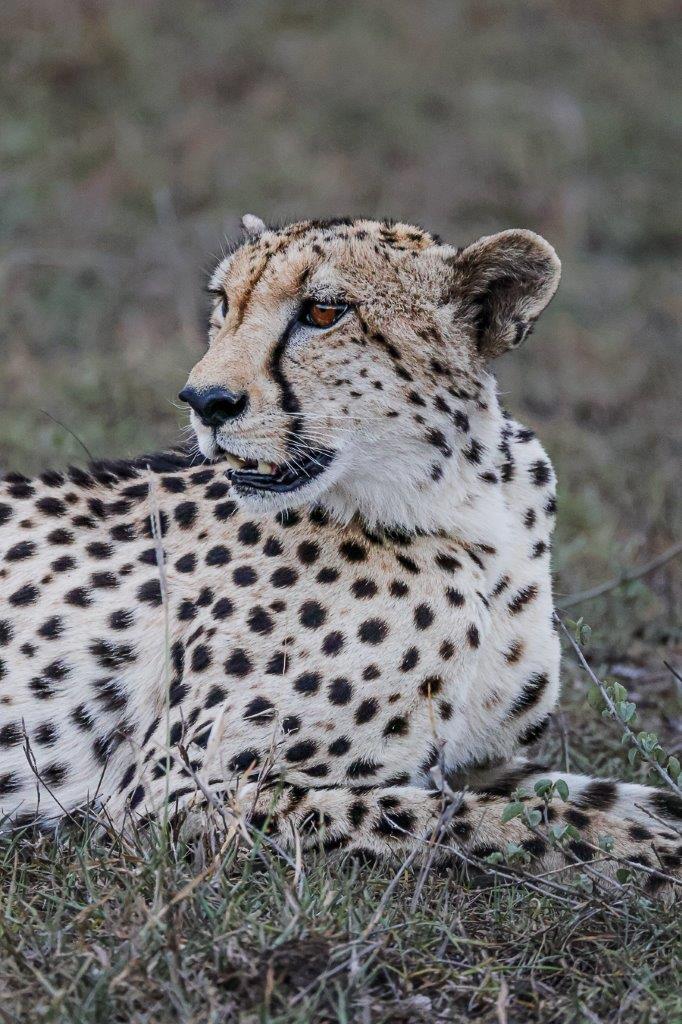
Wild dogs are often on everyone's to-see list, and it is always a special sighting. With them being a critically endangered species, it is never an easy task finding them. We were lucky to find a small pack of four wild dogs roaming through the bush in the late afternoon on the prowl for their next meal. After a failed attempt on a young impala male, they headed straight to a waterhole where they quenched their thirst and lay in the water for a couple of seconds before carrying on again. Wild dogs will often lie in water, especially after very warm days to drop their body temperature. We left them as the light was fading away and they ventured off into the thickets.


A second pack of wild dogs was seen tucked under thick brush in a tight huddle on a cold and rainy evening. After a few brief greetings, they were on their way in search of something to satisfy their growing hunger. The opportunity to follow this pack on the hunt was an exceptional one, which was cherished by all who got to be a part of the action.
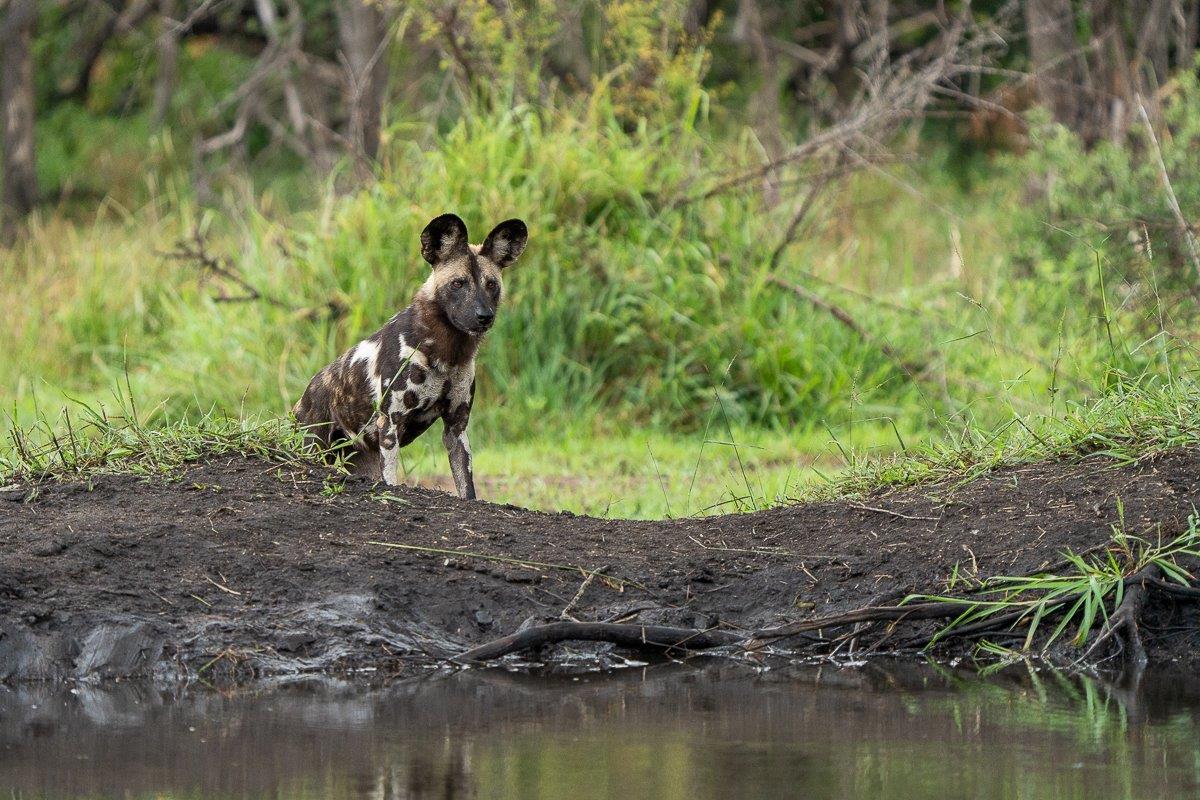



This fully grown steenbok ram was very relaxed and gave us the opportunity for a great sighting. Even though they are rarely seen together, these small antelopes are monogamous species, forming lifelong partners. Males will mark their territories using the preorbital gland on their face and pedal glands between their hooves.
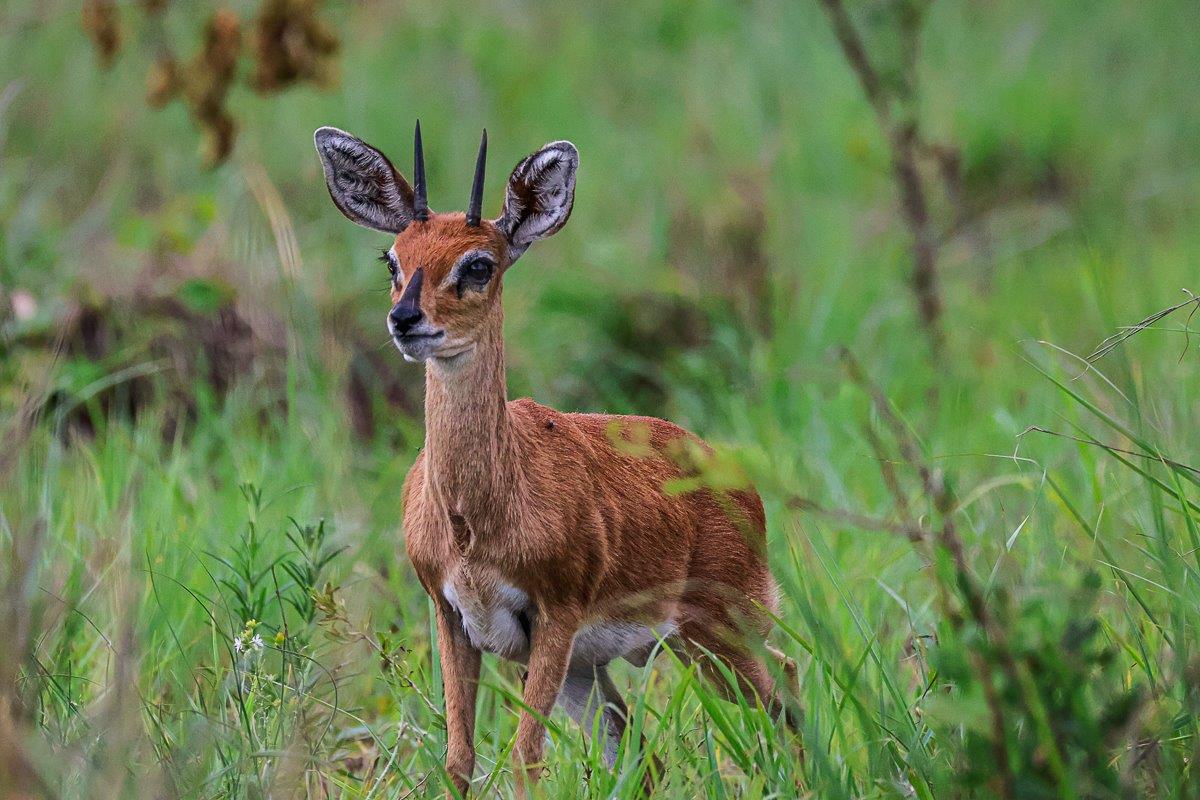
We were looking for giraffe and did find one male in the same area as a herd of wildebeest. We noticed usual behaviour among the herd as they were circling each other and one of them was making distress calls.
We took a closer look when tracker Mike pointed out that one of them was about to give birth. We arrived just in time, as two legs were already sticking out. The female lay down, but this did not help her much and got up again. Soon enough, the calf dropped, and we all sighed in relief!
Within two minutes, the calf (on third attempt), managed to get to its very unsteady feet. The rest of the herd surrounded the mother and calf, welcoming the new addition.
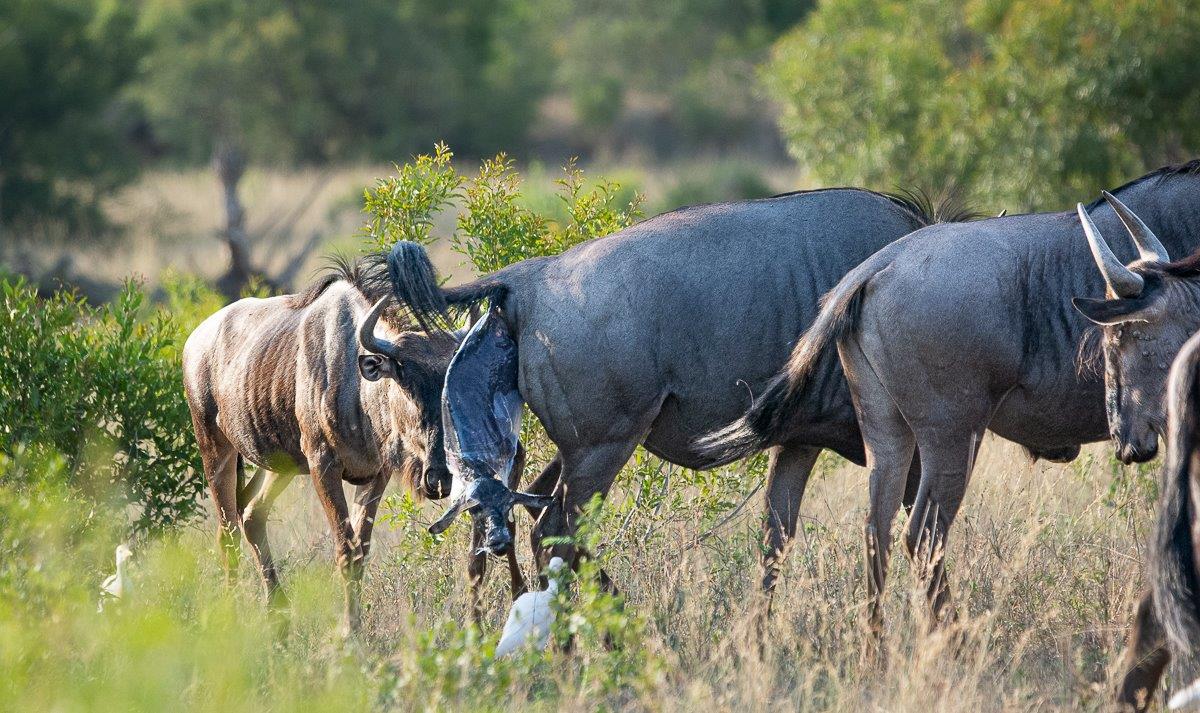


With the lambing season in full swing, we are spoiled by hundreds of newborn lambs, all getting comfortable by the day in their bodies and learning their day-to-day activities from their mom. Impala lambs have a very high survival rate of 70%, with many of them being preyed on by all sorts of predators. Despite this, the majority of them will survive to see the following year. Impalas are born precocial, indicating that they are born very developed and can stand and walk within 5 minutes after birth, allowing them to succeed in life.


With a cloud of dust trailing behind them, a large herd of buffalo jostled for position at the water's edge. An unquenchable thirst means these animals cannot afford to stray too far from water. The late afternoon is often a time when one can see these large herds move toward the nearest permanent water source.
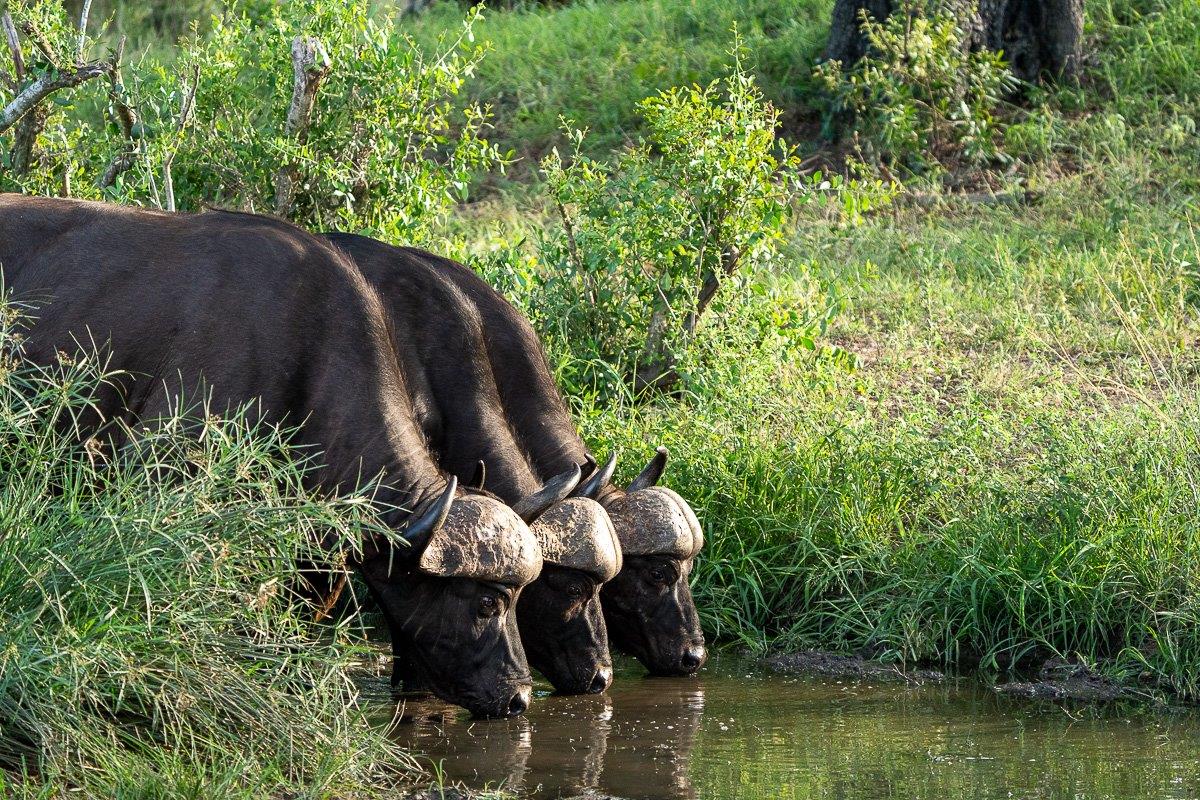
Ranking as the second heaviest reptile in Southern Africa, after the Nile crocodile, the Rock Monitor spends the late afternoon in the sun secured tightly to a tree trunk before settling down for the evening inside a hollowed-out tree cavity nearby. Despite its size, these reptiles remain incredibly nimble and have no trouble scaling even the steepest rock faces at remarkable speed.
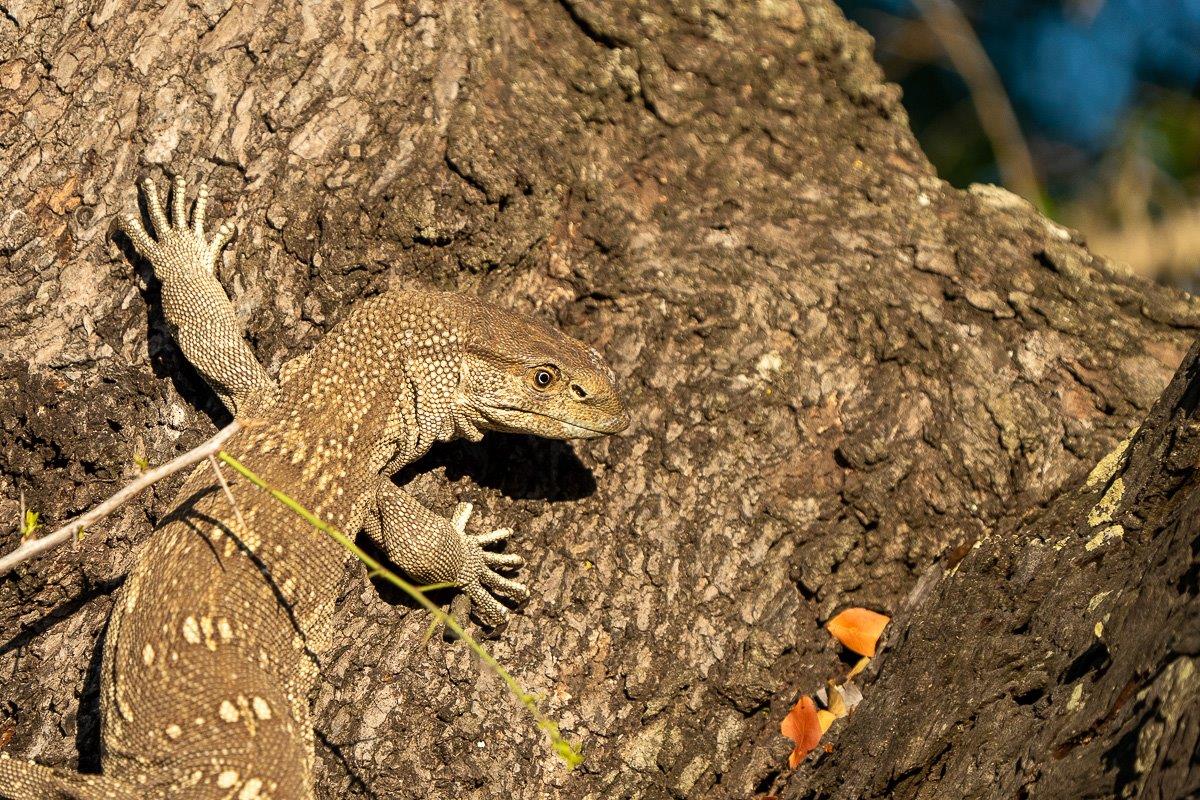
We witnessed a clan of hyenas steal the kill from a female leopard trying to move her kill from one tree to a more comfortable spot. This proved to be a big mistake as the hyenas moved in immediately and took what was left. The hyenas devoured the remains and minutes later nothing was left.
Leopards will avoid confrontations with hyenas as they know an injury can lead to extremely tough times as they might not be able to hunt for themselves due to injuries. It was an incredible sight to see the hierarchy of the hyena clan and how the younger individuals stayed well clear of the big females as they finished every bit off.
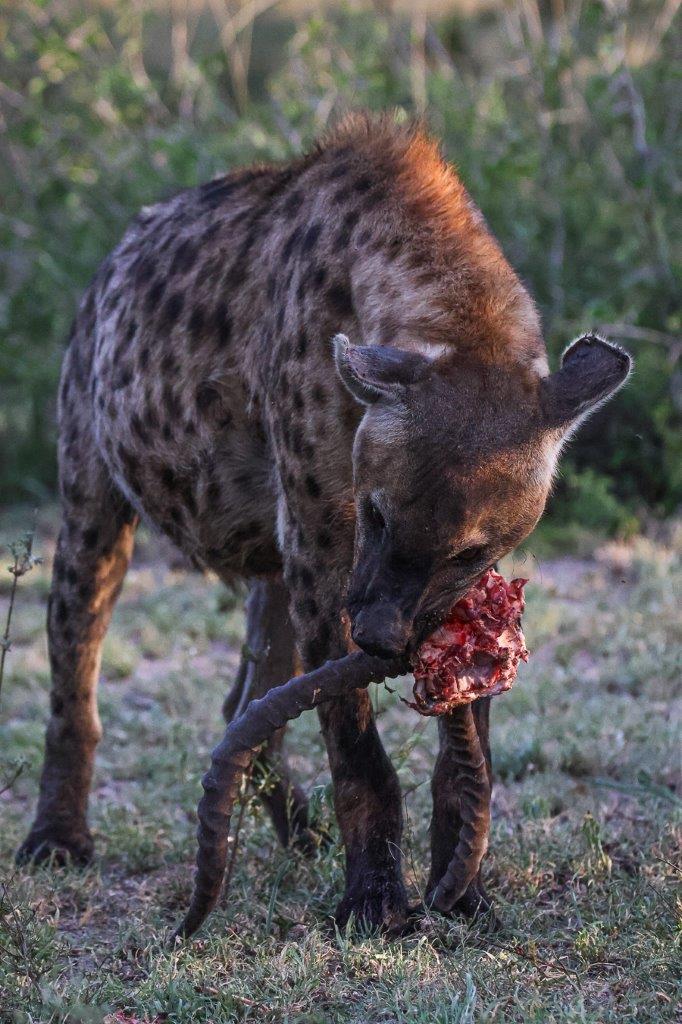
A big dark object caught our attention as we drove past a big Marula tree, and we were astonished by the calm Tawny eagle sitting in the tree, awaiting its next meal to come by.
Tawny eagles are some of the bigger eagle species we see at Sabi Sabi and are also very successful birds of prey. They often sit perched in a tree, waiting for movement before they strike. Their diet includes anything from reptiles to birds. They are often seen scavenging off carcasses, competing with vultures and even Marabou storks, and stealing kills from other eagles if the opportunity presents itself.
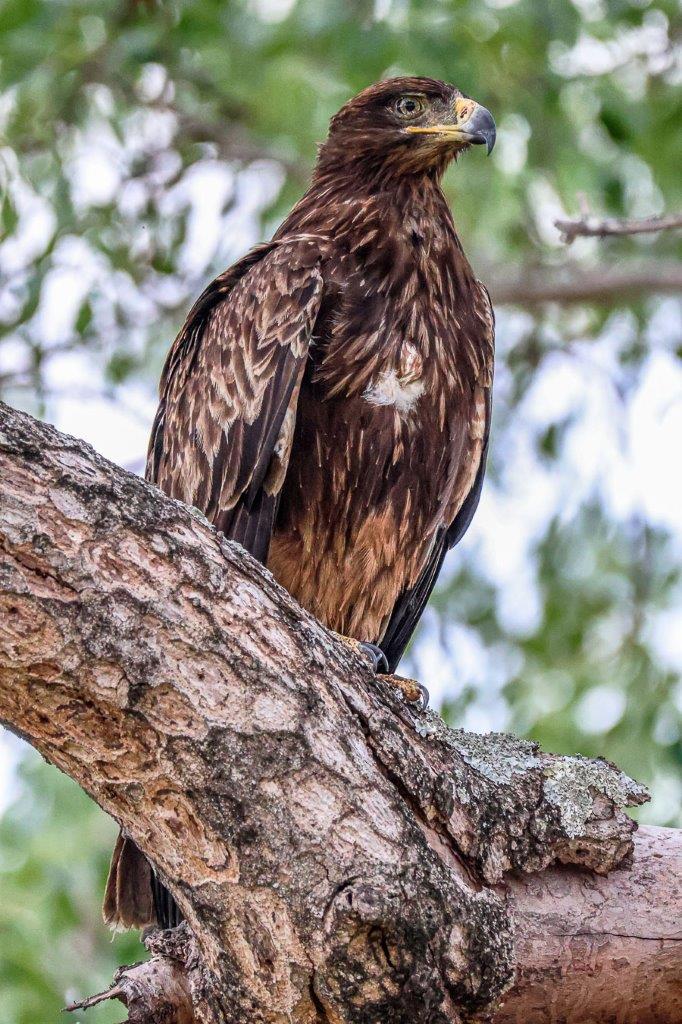
Tusks and trunks, the two primary tools of the elephant, focusing closely on the beautiful character of an elephant's ivory is always a privilege. Their tusks are a massive tool that they use for not only feeding but also setting up a hierarchy. Seeing the cracks on the tusks and how certain parts have been worn down, we realise, once again, that no one needs ivory more than the elephants themselves.
As these elephants raise their trunks high in the air, they are giving themselves the ability to get a better idea of all the scents around them, trying to detect any potential danger and constantly being aware of their surroundings. Nature is astonishing.



Until next time...
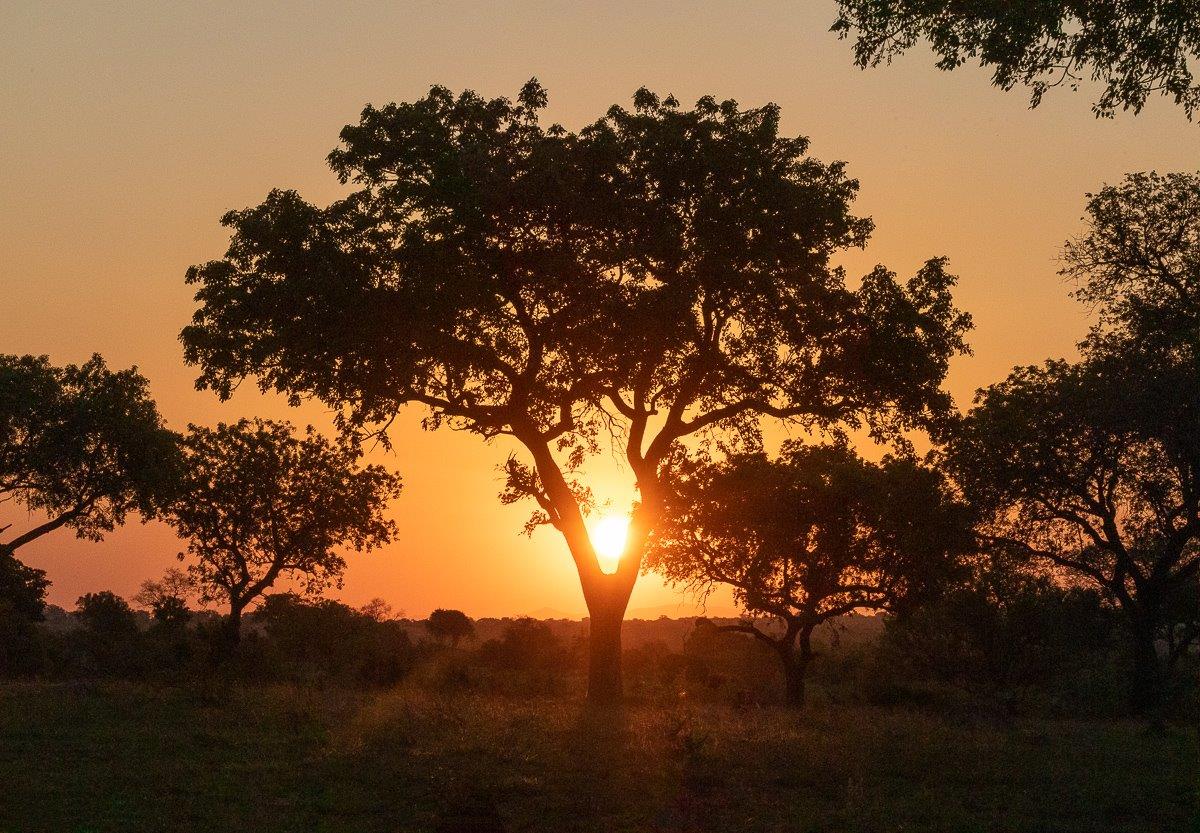
Blog by Wendy Claase
Images by Jason Street, JP van Rooyen, Macs Toich, Ronald Mutero and Ruan Mey







